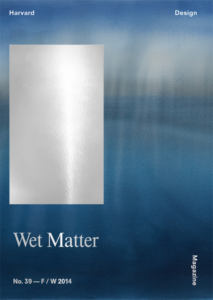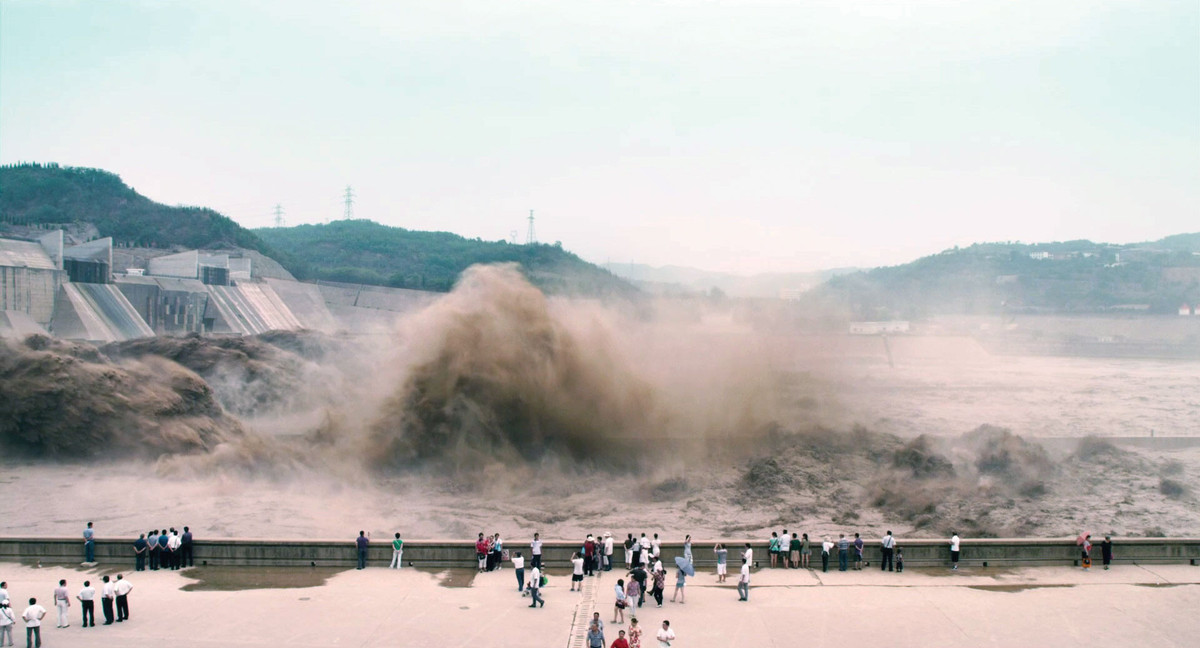Watermark
Dams crystallize flows of power. They define an upstream and a downstream, and they draw power from the cycles of ocean and atmosphere. Typically, dams create flooding upstream in the name of protecting and energizing downstream. It’s no coincidence that, by and large, they sacrifice more traditional, often indigenous villages and peoples upstream to empower downstream coastal cities that were founded or gained prominence in the age of mercantilist and capitalist globalization. Dams hold back not only rainwater and silt, but also time itself, replacing the river’s rhythms with the syncopations of progress, growth, and development. Touted as a source of renewable, clean energy, these hydroelectric monoliths compel us to ask: what sorts of sociological, economic, and political power do dams reproduce, and what histories and spaces do they cleanse?
Edward Burtynsky and Jennifer Baichwal’s majestic and meditative 2014 film Watermark opens with a beguiling image of ethereal abundance. Before we learn that this is the annual blowing out of 30 million tons of silt accumulated behind China’s second-largest dam, the Xiaolangdi on the Yellow River, we are, for a moment, witness to something both terrifyingly sublime and unsettlingly intimate. The existentially familiar flow of water, so often cited (indeed, marketed) as a source of relaxation and harmony, here is frenzied, alien, preternatural.
In this image we see ghosts. Not only the ghosts of the villagers displaced by the dam (200,000 souls in the case of Xiaolangdi, with an estimated resettlement cost of $1 billion); not only the ghosts of the workers who died building it; not even the ghosts of the innumerable nonhuman life forms whose migratory patterns, spawning cycles, hunting waters, or food sources have been disrupted. The ghosts we see elude definition and are not easily exorcised from the imagination. Here is a living, cinematic Rorschach blot, a generative image of shared meaning. The dam is a profound archetype in the collective imagination: a materialization or solidification of unfathomable human (and nonhuman) energies that, in turn, shapes the future flows of human (and nonhuman) energies. It is no wonder that the filmmakers return to the dam so many times in their fluid, flowing cinematic narrative. The dam haunts us all, its traces accumulating like silt in the collective, global political unconscious.
And so, in the spectacle presented by the annual release of the accumulated silt at the Xiaolangdi Dam (attended by tens of thousands of onlookers, the images reproduced in hundreds of international newspapers and magazines), one is reminded of the Roman Saturnalia, the Carnival, and other similar festivals the world over where, for a limited period of time, the “world is turned upside down,” the social floodgates are opened, the rich become poor, the poor rich, and those dark, anarchic drives are let loose. All, it must be said, so that on waking the next day, we might find the social order restored, stronger and more resilient thanks to this spectacle of release. We are drawn to this aqueous mirage because in it we sense a letting go, an uncorking, a release of pent-up contradictions. And in this, the dam’s logic or order is glorified and its power reproduced.
How to challenge that power? Perhaps one has to critique the deeper logic of the dam within the very grammar of one’s art. Those eager to see an activist stance might wish Watermark more heavy-handed in its condemnations of the hydropolitics of contemporary globalization. Certainly there is a patent need for stark revelations and militant refusal. But one of the documentary’s key strengths is to model for us, in its very narrative structure and cinematic flow, a different way of thinking and of feeling, one that stands in stark contrast to the model both emblematized and reproduced by the dam itself, one possessed by the spirit of the silted and muddy river. In this way, Watermark helps us recognize and generate a very different form of power.
Max Haiven is Assistant Professor in the Division of Art History and Critical Studies at the Nova Scotia College of Art and Design. He is author of Crises of Imagination, Crises of Power (2014), The Radical Imagination (with Alex Khasnabish, 2014), and Cultures of Financialization (2014).

